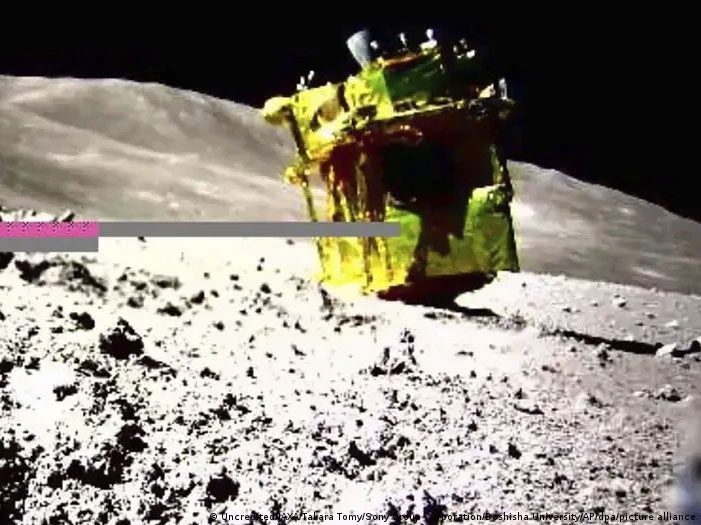Despite pessimistic predictions, Japan’s SLIM lunar probe has achieved the remarkable feat of reviving three times after enduring lunar nights in temperatures of -183°C, -130°C, and -170°C.
On April 24, the Japan Aerospace Exploration Agency (JAXA) announced that its Smart Lander for Investigating Moon (SLIM) continues to make headlines: it has survived its third lunar night in extremely cold conditions.
According to JAXA, the SLIM lander sent a signal back to the control station on Earth on the evening of April 23, and this is a sign that the lander has awakened after another night on the Moon.

The SLIM lander landed at an angle that caused its solar panels to misalign, preventing optimal energy collection. (Source: AP).
The SLIM lander touched down on the Moon in January, marking Japan as the fifth country in the world to successfully land a spacecraft softly on Earth’s only natural satellite, following the former Soviet Union, the United States, China, and India.
The SLIM lander, weighing 200 kg, landed at an angle that caused its solar panels to misalign, thus preventing it from optimally charging during the daytime when temperatures reach about 100°C.
Despite bleak predictions, this 200 kg probe has achieved the remarkable feat of reviving three times after experiencing lunar nights with temperatures of -183°C, -130°C, and -170°C. A night on the Moon lasts approximately 14 Earth days.
Previously, JAXA stated that the SLIM lander was not designed for such harsh lunar nights.
So far, SLIM has accomplished its mission’s primary objectives, including testing precision landing technology, deploying two small autonomous robots, conducting a series of scientific experiments, and transmitting images and data from the Moon back to Earth.
In a statement on social media platform X, JAXA confirmed that SLIM’s primary functions are still operational, despite the repeated cycles of extreme temperature changes.
According to JAXA, the multi-band camera on the SLIM lander is searching for a mineral known as “Olivine” on the Moon’s surface, which will then be analyzed for its composition.
Comparing this mineral with samples on Earth will provide evidence for the hypothesis of a major collision (Big Bang), suggesting that the Moon was formed from a collision between Earth and another planet approximately 4.6 billion years ago.


















































